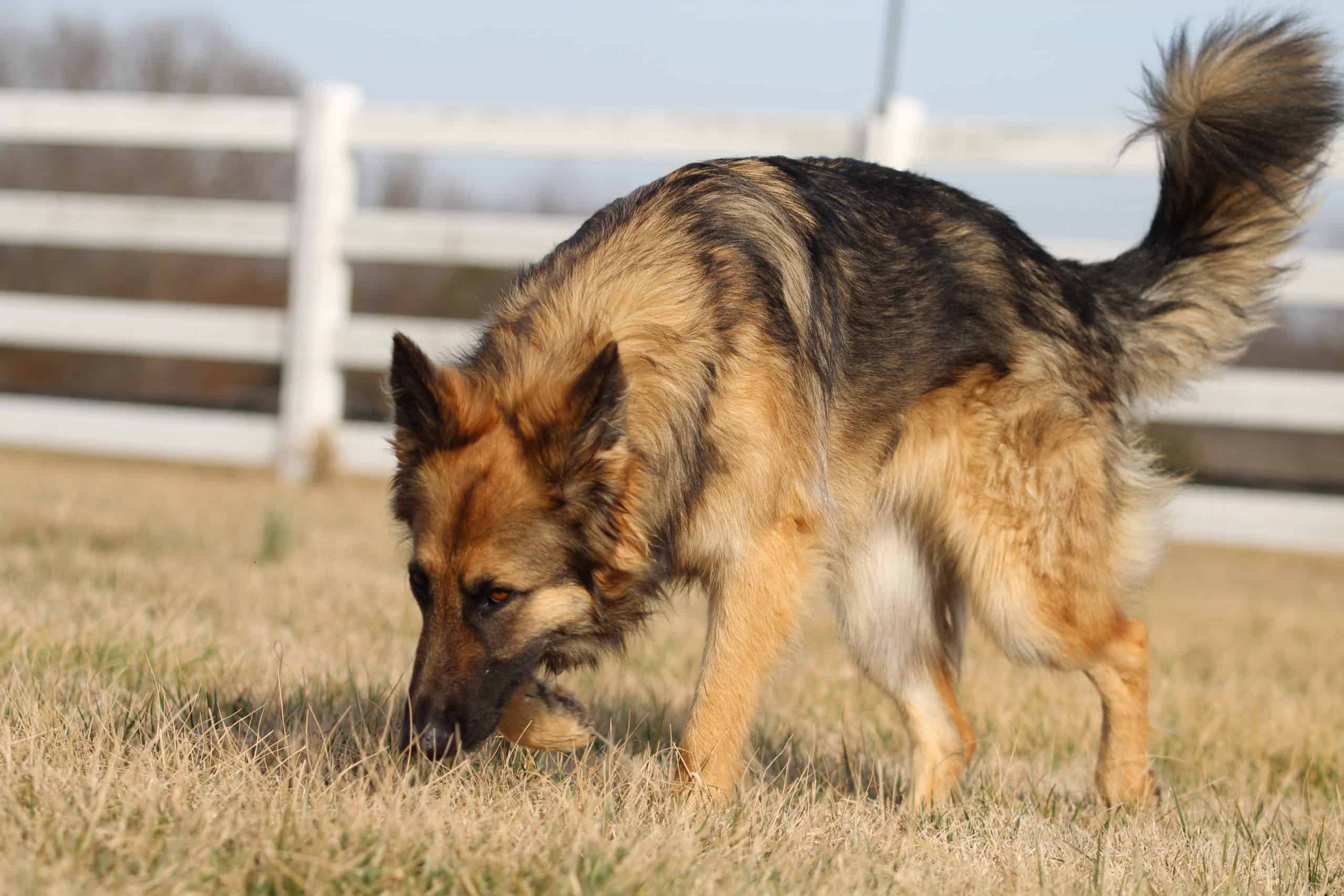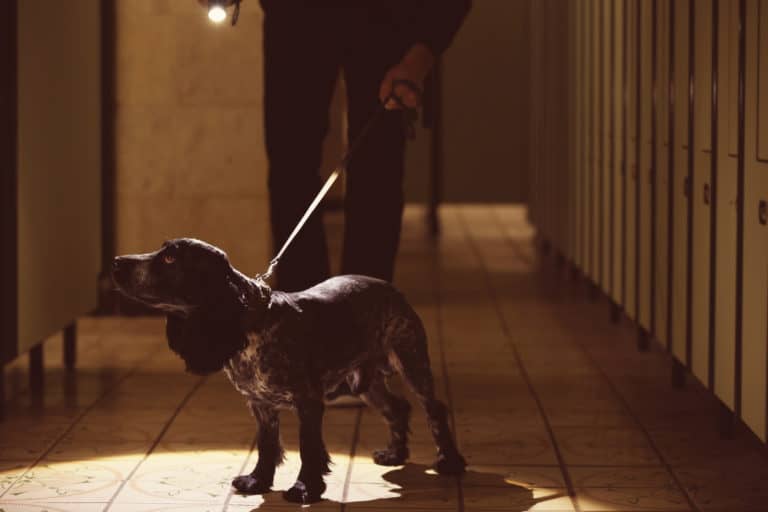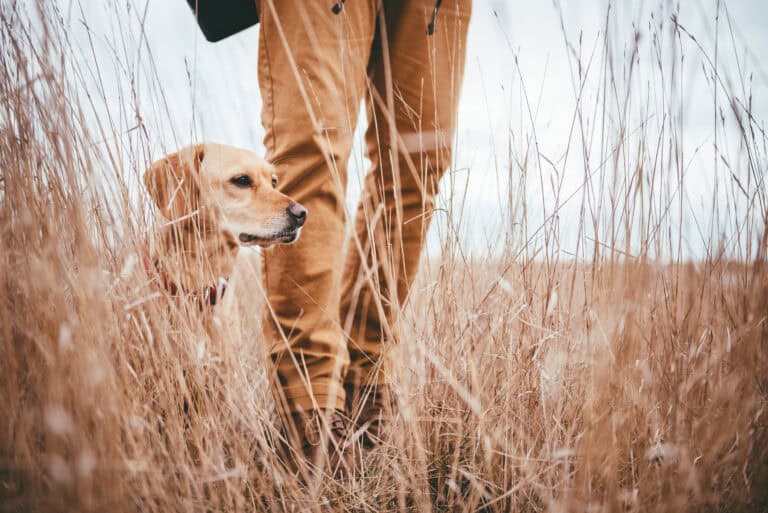For centuries, dogs have been working alongside humans by performing a variety of tasks. From immaculately trained service dogs who enable individuals to live an improved quality of life, to working dogs who assist law enforcement teams with keeping communities safe, there seems to be no limit to the ways that dogs can help us.
One way that dogs have been trained to help humans is through their capabilities as detection dogs. With some breeds having over 300 million olfactory receptors, dogs are ideal candidates to help us to locate specific odor. Due to this enhanced sense of smell, dogs are able to distinguish between the presence of target and irrelevant odors – even when only a minimal trace of the target odor is present in a vast amount of space.
Types of detection dogs
Detection dogs can be deployed for a number of purposes, including the following examples:
- Narcotics detection dogs – to locate illicit or illegal substances (for example, in schools).
- Explosive detection dogs – to locate the presence of bombs or other explosive devices.
- Conservation detection dogs – to help preserve our environment, by helping to provide data on the location of endangered species through identifying the presence of animal scat.
- Bed bug detection dogs – to help identify the presence of bed bugs in domestic environments, or communal lodging like hotels or apartment complexes.
- Cadaver detection dogs – to help law enforcement personnel to identify human remains.
- Sport detection dogs – these are dogs who are utilized for scent work games, such as to locate essential oils in events like AKC Scent Work.
These are just the most common examples. Dogs can actually be trained to detect almost any odor. Some other rarer examples are electronic/media device detection dogs, antler detection dogs, truffle detection dogs, and insect/termite detection dogs. This list could go on.
What makes a good detection dog breed?
Although many dogs are naturally capable of being trained as effective detection dogs, the type of detection will dictate which breed is most suitable. Each type of detection discipline has its own nuances which can contribute to the decision-making process when choosing a dog breed for a specific purpose.
For example, by the nature of their work, cadaver dogs typically need to cover large, outdoor areas, such as fields or woods. Searching for human remains is an activity that can last for hours – and even days. Consequently, the breed characteristics will require a dog that can cover a vast distance with sufficient stamina and drive to continue searching, and is also able to navigate difficult terrain like dense woodland.
Conversely, in some circumstances, it may be beneficial to use a smaller breed. Consider a situation where a dog is searching indoors in a smaller, confined area; it may even need to squeeze into tight gaps or spaces to fully complete its search. It may be preferable to use a smaller breed who has more dexterity to navigate those tighter spaces.
Ultimately, it is about choosing the right breed for the right purpose.
Detection dog breeds
1) German Shepherd
Adaptable, intelligent and highly trainable, German Shepherds are perhaps the archetypal detection dog. They have been used as Police K9s for a variety of purposes, mainly due to their loyalty and courage in all manner of circumstances.
As a detection dog, the German Shepherd is equally adept at covering large distances in rural locations as it is at detecting drugs, explosives and other substances in an indoor setting.

2) German Shorthaired Pointer
The German Shorthaired Pointer (GSP) was developed in its native Germany at some point in the seventeenth or eighteenth century. The GSP was used by German hunters to find gamebirds, rabbits, raccoons and deer.
Its athleticism, combined with its keen sense of smell, make GSPs prime candidates for a variety of detection work. Due to their inherent ‘pointing’ instinct, it is far easier to teach a reliable passive trained final response (TFR) to a GSP than some other breeds.

3) Belgian Shepherd
In the United States, we commonly see the Belgian Malinois used in law enforcement and other working dog activities. Across Europe and in other parts of the world, the Belgian Shepherd refers to the Malinois and its three lesser-known Belgian counterparts – the Groenendael, the Turvuren, and the Laekenois.
Historically, Belgian Shepherds were used by farmers to herd sheep and livestock. However, in modern times, their tenacious work ethic and temperament has seen them frequently utilized for detection work.

4) English Springer Spaniel
Developed by hunters in England as an eager gundog, the strength of the Springer Spaniel’s nose has seen it transformed into a highly-capable detection dog.
Their natural inclination to zig-zag through fields and flush out birds, combined with their high-energy and natural stamina, means the Springer Spaniel is used in a variety of detection disciplines. Their docile, unthreatening appearance can also provide more subtlety than other breeds when law enforcement or security teams are working in public places.

5) Labrador Retriever
Labrador Retrievers are one of America’s most popular dog breeds. They have long been prized by pet dog owners for a number of traits, including their loyalty and friendly disposition. This strong human-canine relationship is a primary reason why the Labrador Retriever is often used as part of Police K9 teams.
Labs are excellent candidates for detection work; their physical and mental strength is almost unparalleled. Their unrelenting stamina means they can continue working, even when the search has been underway for some time. They are used by law enforcement teams in places like airports to detect explosives or narcotics.

6) Beagle
Like many other hounds, Beagles have a notoriously sensitive sense of smell. The breed was developed in England and was eventually brought to the United States after the Civil War, with the first Beagle recognized by the AKC in 1885.
Their finely-tuned nose makes them ideally suited to many different types of detection. To illustrate this point, the USDA even has a Beagle Brigade, which are utilized in airports to identify unauthorized agricultural products.

7) Cocker Spaniel
Originally developed as hunting dogs, the Cocker Spaniel is more likely to be seen nowadays as a companion animal. However, their inherent hunting ability enables them to succeed in detection disciplines, particularly those which suit a dog of its compact size and stature.
The welcoming demeanor of a Cocker Spaniel helps to create a positive image and minimizes potential apprehension or resistance from individuals they encounter during their work.

8) Border Collie
The Border Collie is often described as the most intelligent of all dog breeds. While there is no true way to quantify that claim, there is little doubt that the breed is highly trainable and has a neverending work ethic.
Although most frequently used on a farm for herding activities or protecting livestock, Border Collies are quick to understand new training initiatives. With this in mind – and combined with that tireless drive to work – they can be deployed as effective detection dogs to identify a number of different odors.

In conclusion
As we discussed at the outset of this article, there are many different types of detection dog – and many different breeds which can be utilized in these disciplines.
When it comes to choosing the correct detection dog breed, it is important to marry the breed characteristics to the exact nature of the detection work. If you are considering adding a detection K9 to your team, or need a detection dog for another purpose, Black Hills K9 LLC can help guide you through the decision-making process and provide you with premier training to ensure your new addition fulfills the job you need it to do.
Perhaps the most popular form of detection K9 is Search and Rescue (SAR) dogs, who can cover varying types of terrain in pursuit of humans, either as live-find or cadaver dogs. Next time on our blog, we’ll explore the differences between different types of SAR dogs.




